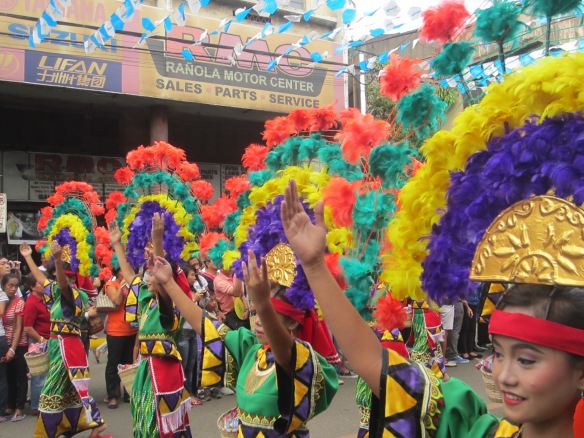When I was young I lived in a city called Cebu in the Visayan region of the Philippines. Each January of every year the entire city comes together for the celebration of Sinulog. The word Sinulog they say comes from the word “sulog” in Bisaya which means flow of the river. On the last day of the Grand Parade the streets turn into rivers, from which over flow people, music, dancers, colors and music.
 I was no more than 5 years old the last time I had seen the Sinulog Parade. I can recall being lifted off of my Papa’s shoulders and onto a tree in the park so that I might have a better view. Always on a hot, sunny day the parade goes on from morning until night. Dancers from every imaginable school, institution, and organization participated. The parade, as a river, never stops.
I was no more than 5 years old the last time I had seen the Sinulog Parade. I can recall being lifted off of my Papa’s shoulders and onto a tree in the park so that I might have a better view. Always on a hot, sunny day the parade goes on from morning until night. Dancers from every imaginable school, institution, and organization participated. The parade, as a river, never stops.
It had never been a religious affair to me, I was too young for such things. The origins of the festival has deep spiritual roots, as it continues on today. It celebrates Santo Nino, or the Holy Child Jesus and the iconic symbol of the Sto. Nino, a child dressed in red and a red cape adorned with gold who holds the world in his palm is carried, lifted and rejoiced a thousand times throughout the day.
Millions come to celebrate. The streets are hot and crowded, the sun always bright and glaring in this tropical paradise. On the streets are the dancers and the performers, on either side on the sidewalk, on balconies, standing on chairs, standing on cars, standing on top of trucks, and hanging off trees are the spectators. 
Its delirious and mad. Spectators and performers hide behind masks, costumes and paint. Imagination functions at its highest. The energy of the city is at its strongest.
As is a river, the dancing goes on. The parade snakes through the streets of Cebu. Giant speakers fill the air with music. The drummers beat, the trumpets blare, the feet stomp. There is no end.




